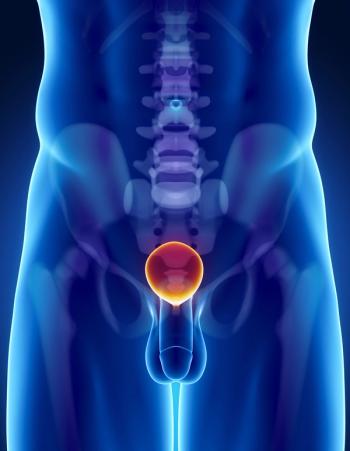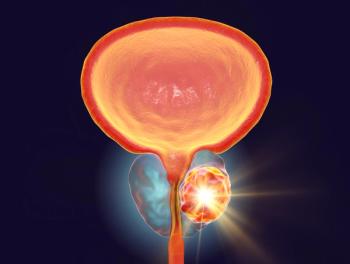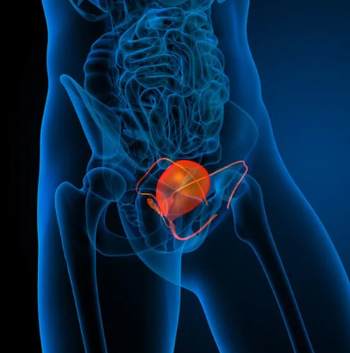
- ONCOLOGY Vol 13 No 10
- Volume 13
- Issue 10
The Department of Defense Center for Prostate Disease Research
In 1991, the United States Congress expressed a growing concern over the incidence of prostate cancer and the controversy over the optimal treatment of the various stages of the disease. Congress also supported the need for both basic
In 1991, the United States Congress expressed a growing concern over the incidence of prostate cancer and the controversy over the optimal treatment of the various stages of the disease. Congress also supported the need for both basic and clinical research in prostate cancer in order to reduce the incidence of this life-threatening disease and to develop more effective, more specific, and less toxic forms of therapy for patients in all stages. Pursuant to discussions at various levels of military medicine, Congress provided funding in fiscal year 1992 to establish a Center for Prostate Disease Research. The Uniformed Services University of the Health Sciences (USUHS), Bethesda, Maryland, was designated to provide for the establishment and administration of the Center for Prostate Disease Research (CPDR) as authorized in public law no. 102-172.
The F. Edward Hébert School of Medicine of USUHS directs the CPDR program, and the Henry M. Jackson Foundation for the Advancement of Military Medicine in Rockville, Maryland provides administrative and collaborative support. The CPDR has been directed through the collaborative efforts of Norman M. Rich, MD, chairman, Department of Surgery, USUHS, David O. McLeod, MD, chief of urology, Walter Reed Army Medical Center and Judd W. Moul, MD, associate professor of surgery. Dr. (Lieutenant Colonel) Moul was named director of the CPDR program in 1992. An executive board was established to provide general direction and guidance for the program.
The center initially focused on three major aims:
The establishment of a Clinical Trials Research Center at Walter Reed Army Medical Center to serve as a model for other military sites.
The establishment of a Molecular Biology Research Program at USUHS.
The development of a triservice Multicenter National Prostate Cancer Longitudinal Database.
An endowment support program and endowed chairs in basic science and clinical sciences have been established to provide for these long-term scientific endeavors. The endowments also provide for a CPDR administrative core to initiate clinical studies and allow for the translation of the rapid advances in molecular and genetic medicine to the study of human prostate cancer.
The Center for Prostate Disease Research will conduct basic and clinical research programs that strive to combat diseases of the prostate. It will integrate basic and clinical science studies to improve early detection and prognostic factors and develop potential treatments for prostate disease. The center will focus on the natural history of prostate disease, outcomes research, and behavioral, psychosocial, and quality-of -life issues as they relate to prostate diseases. It will also provide physicians, scientists, and medical and graduate students with training in molecular biology and clinical research. In addition, the center will support other collaborative research efforts within the Department of Defense related to prostate disease.
While clinical research in prostate disease has been ongoing at Walter Reed Army Medical Center for many years, to continue being successful, this effort needed to expand its science, technology, and support base (which required additional space and personnel). An entire ward of approximately 5,000 sq ft has been approved for the establishment of the CPDR Clinical Trials Research Center at Walter Reed Army Medical Center. Renovation began in early 1999, and the new facility, when opened, will consolidate all prostate cancer research in one area (the Clinical Trials Center) within the medical center. The objective is to combine prostate screening, data collection, clinical diagnosis, education and counseling, and prostate disease clinical trial research in an efficient, personal, patient-oriented center. Plans are also underway to use the Walter Reed Army Medical Center site as a model for future sites in San Antonio, Texas, and San Diego, California.
The Molecular Biology Research Laboratory
The Molecular Biology Research Laboratory of the Center for Prostate Disease Research was established in 1993 with the goal of developing state-of-the-art basic research facilities where research questions relating to the molecular mechanisms of prostate tumorigenesis could be addressed. With the support of the Department of Surgery, School of Medicine, USUHS, the center has completed its initial phase of development. One unique aspect of the centers laboratory program includes active collaborations between clinicians, pathologists, and molecular biologists. These three disciplines have created a superb environment for the development of research opportunities.
Following the recruitment and appointment of a core group of established scientists under the leadership of Shiv Srivastava, phd, the CPDR has now achieved the critical mass needed for a competitive basic research program. The molecular biology research activities at USUHS have occupied approximately 3,000 sq ft of space (three areas) but with limited room for expansion. Because of these constraints, the CPDR program will relocate to a new dedicated, state-of-the-art, 20,000 sq ft building in Rockville, Maryland. This will allow the program to expand the centers laboratory activities and establish the administrative headquarters and support base for all CPDR activities, including the triservice Multicenter Prostate Cancer Longitudinal Database. The CPDR will continue to maintain laboratories at USUHS for animal and other basic science research.
The Triservice Multicenter Prostate Cancer Longitudinal Database
The triservice Multicenter Prostate Cancer Longitudinal Database, which began as a prospective data collection system at Walter Reed Army Medical Center in January 1994, has now expanded to 11 other locations and also includes retrospective data collection back to 1980. Physician investigators and dedicated full-time research data managers are now located at Walter Reed Army Medical Center, Brooke Army Medical Center, Madigan Army Medical Center (MAMC), Tripler Army Medical Center (TAMC), Eisenhower Army Medical Center, Malcom Grow Air Force Medical Center, Wilford Hall Air Force Medical Center, Wright-Patterson Air Force Base, Travis Air Force Base, National Naval Medical Center, Portsmouth Naval Medical Center, and San Diego Naval Medical Center.
A standardized computer database has been designed and tested and this triservice, secure, internet-linked relational database repository will be located at USUHS. The data managers and participating physicians (urologists, radiation oncologists, and medical oncologists) have already identified more than 10,000 retrospective cases for entry into the database and prospective data collection has been underway at many sites for 1 to 2 years.
A tissue and serum bank has also been initiated at CPDR sites in the Washington, DC, area with the support of the Armed Forces Institute of Pathology. Frozen tissue, blood, and bone marrow samples have been collected from prostate cancer patients under institutional review boardapproved protocols at Walter Reed Army Medical Center since 1993 and at other sites more recently. Specimens from more than 750 patients with prostate cancer or benign prostatic hypertrophy diagnosed and treated at the sites have been collected and catalogued. This repository will be linked to the CPDR database by unique identifiers that meet IRS security and confidentiality requirements. Plans are being developed to expand the tissue and serum bank collection to other triservice medical centers.
Continued Education and Training Efforts
The CPDR education and training efforts within the Department of Defense will continue to expand. The CPDR has played a central role in the establishment of the Uniformed Services Urology Research Group and the Uniformed Services Radiation Oncology Group. These groups meet regularly to encourage physician education and to foster collaborative research within the military health-care system. In addition, the CPDR program provides molecular biology education and training for urology residents and medical and graduate students of USUHS; the faculty of the CPDR laboratory actively participate in the education of USUHS medical and graduate students.
The long-term goal is to organize a comprehensive CPDR prostate research training program for Department of Defense physicians and scientists and develop other educational opportunities through the support of ad hoc committees and advisors selected from the Defense Health Care System in coordination with the surgeon general.
The CPDR is a cooperative effort between USUHS, the Armed Forces Institute of Pathology, all of the triservice military medical centers, and the Henry M. Jackson Foundation for the Advancement of Military Medicine. The CPDR has already funded a number of collaborative research studies including a study of prostate-specific antigen (PSA) in young males from the US Army and Navy Serum Repository (ANSR) in collaboration with Walter Reed Army Institute of Research and the Naval Medical Research Command. Furthermore, a prospective study of PSA as a screening test for prostate cancer in young, active duty men between 40 and 50 years of age is being conducted in collaboration with the Army Physical Fitness Research Institute at the Army War College in Carlisle, Pennsylvania.
One of the latest collaborative research projects is the African American Hereditary Prostate Cancer Study with Howard University College of Medicine. Under the CPDR charter, a scientific oversight committee has been appointed to assist the director of the CPDR program in the development and assignment of research priorities and to provide peer review. This scientific oversight is modeled after the peer review used for the intramural programs of the National Cancer Institute of the National Institutes of Health.
The Centers nationally recognized researchers have made important contributions to the current knowledge of prostate disease and have published their findings in prestigious journals including The New England Journal of Medicine, The Journal of the American Medical Association, and Cancer Research.
In 1996, for example, the center released study results urging physicians screening African-Americans for prostate cancer to use new cut-off points for a common blood test, thus providing for more accurate detection of cases in this high-risk group.[1] The revised normal values for the PSA test are based on a new diagnostic strategy and age-specific ranges for African-Americans, who have the worlds highest prostate cancer rates.
Another area of interest to the centers researchers is studying tumor suppressor genes and other key molecular biomarkers. The centers researchers have conducted extensive studies of p53 defects in prostate cancer patients and have developed a gene therapy vector. In addition, studies have been conducted in a large cohort of radical prostatectomy patients for p53, bcl-2, Ki-67, CD-34 (angiogenesis), and, most recently, p27.[2-5]
In a series of experiments, the researchers found that p53 and bcl-2 expression are clinically useful when studying the radical prostatectomy specimen but not the corresponding needle biopsy. Other studies suggest that p53 adenovirus gene therapy may inhibit the growth of prostate tumors. The Center is in the process of establishing clinical trials of this gene therapy for prostate cancer patients at Walter Reed Army Medical Center.
The center is also very active in patient support and education programs. The centers director, Dr. Judd W. Moul, was awarded the American Medical Associations Young Physicians Section Community Service Award for his role in helping to establish prostate cancer patient support groups within the military health care system.
References:
1. Morgan TO, Jacobsen SJ, McCarthy WF, et al: Age-specific reference ranges for prostate-specific antigen in black men. N Engl J Med 335:304-310, 1996.
2. Moul JW, Bettencourt MC, Sesterhenn IA, et al: Protein expression of p53, bcl-2, and KI-67 (MIB-1) as prognostic biomarkers in patients with surgically treated, clinically localized prostate cancer. Surgery 120:159-166, 1996.
3. Bauer JJ, Sesterhenn IA, Mostofi FK, et al: Elevated levels of apoptosis regulator proteins p53 and bcl-2 are independent prognostic biomarkers in surgically treated localized prostate cancer. J Urol 156:1511-1516, 1996.
4. Bettencourt MC, Bauer JJ, Sesterhenn IA, et al: CD34 immunohistochemical assessment of angiogenesis as a prognostic marker for prostate cancer recurrence after radical prostatectomy. J Urol 160:459-465, 1998.
5. Bauer JJ, Connelly RR, Sesterhenn IA, et al: Biostatistical modeling using traditional variables and genetic biomarkers for predicting the risk of prostate carcinoma recurrence after radical prostatectomy. Cancer 79:952-962, 1997.
Articles in this issue
about 26 years ago
Radiation Effective in Treating Early Prostate Cancerabout 26 years ago
Participants in Chemotherapy Trials Incur Minimal Excess Costabout 26 years ago
Roswell Park Researchers Studying Health Effects of Chernobyl Accidentabout 26 years ago
Medical Records and Privacyabout 26 years ago
Radiofrequency Ablation Shows Promise for Inoperable Liver Tumorsabout 26 years ago
Axillary Dissection May Be Unnecessary for Many Breast Cancer PatientsNewsletter
Stay up to date on recent advances in the multidisciplinary approach to cancer.


















































































